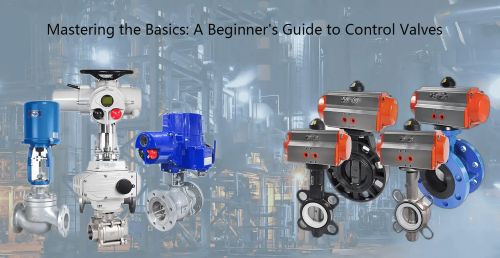


A Comprehensive Guide to Control Valves: Fundamentals, Types, and Applications
China Control valves are indispensable components in modern industrial systems, yet their complexity is often underestimated. This guide explores the fundamentals of control valves—what they are, how they work, their applications, types, and the advantages and limitations they present.
A control valve is a mechanical device used to regulate a process variable—typically flow, pressure, or temperature—by modulating fluid passage within a piping system. It responds to signals from a controller, adjusting its internal mechanism to maintain desired setpoints, thereby ensuring system stability and efficiency.
Control valves function by altering flow resistance within the system. A controller sends a signal (often 4–20 mA) to an actuator, which in turn adjusts the position of the valve stem, plug, disc, or ball. This movement changes the valve opening, either restricting or permitting fluid flow as required.
Actuator types include pneumatic, electric, and hydraulic.
The valve’s responsiveness and accuracy are enhanced by positioners, which ensure the valve reaches the commanded position.
Control valves are critical in a wide range of industries:
Oil & Gas: Managing flow rates, pressures, and blending processes.
Chemical Processing: Regulating temperatures, flow, and mixing of reactive fluids.
Power Generation: Controlling steam flow and cooling systems.
Water Treatment: Managing filtration systems and chemical dosing.
HVAC Systems: Regulating airflow, water flow, and temperature zones.
These valves are used for:
Flow regulation
Pressure reduction or control
Temperature modulation
Fluid mixing or diversion
Control valves come in several designs, each suited to specific operational needs:
Globe Control Valves
Ideal for throttling
High accuracy and control precision
Common in high-pressure applications
Butterfly Control Valves
Suitable for large-diameter pipelines
Compact, lightweight, and cost-effective
Moderate control precision
Ball Valves
Excellent for quick on/off control
Minimal leakage and low pressure drop
Less suitable for throttling applications
Diaphragm Valves
Designed for hygienic or corrosive fluid handling
Often used in pharmaceutical and food processing industries
Provide clean, leak-free operation
Precise control of process parameters
Automation-ready, compatible with control systems
Versatile in materials, sizes, and actuation methods
Enhanced safety and efficiency in critical processes
Wear and tear from continuous use or abrasive fluids
Potential leakage if not properly maintained
Complex maintenance, especially for advanced models
Misapplication risks due to incorrect sizing or selection
Control valves are fundamental to achieving stable, efficient, and safe operation in industrial systems. Understanding their operation, applications, and design differences empowers engineers and operators to select and maintain the right valve for each task. While evolving technologies—such as intelligent valve positioners—are improving performance and reliability, a solid grasp of control valve basics remains essential for optimizing any process control system.Know more about Google SEO Directory
